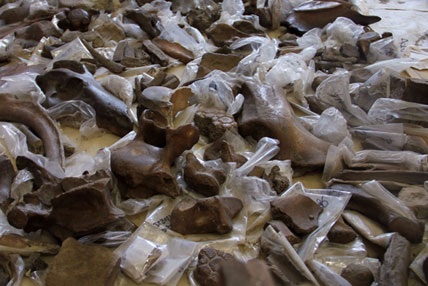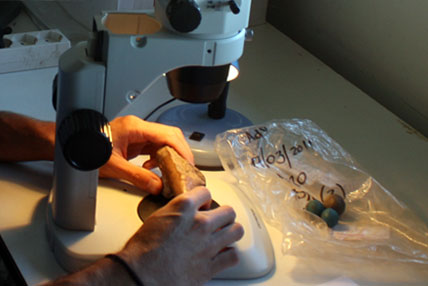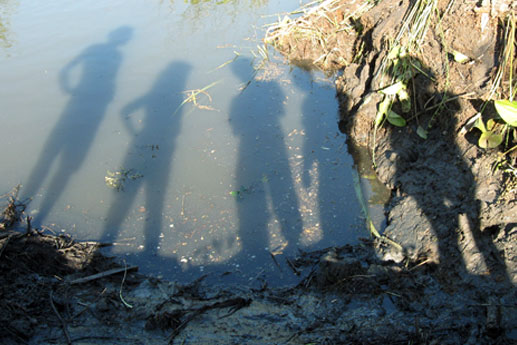
The years passed by after the finding and collection in 1997. Permissions were requested, diverse obstacles were overcome and a couple of preliminary papers on the marks in a clavicles and on radiocarbon dates were published: surprisingly enough, the analyses yielded a date on about 30,000 years before present.
In June 2009, the Intendencia de Canelones provided the machinery to build the by-pass and diverte the course.

Finally, in March 2011 climatic conditions were appropriate. With unleashed enthusiasm and helped by members of the 14th Battalion of the Uruguayan Army, the lagoon was dammed with dirt bags and the water was pumped out. The sight of the streambed blanketed by bones was the reward for the long wait; fourteen years after the original finding, the systematic collection of the remains had begun.

First, the site was divided in zones according to the way in which the material showed up, alternating sophisticated alphanumeric codes with more literary expressions: Ground Zero (in English in the original), Gollum’s pond, Zone of the Unconquerable Water). After that, the site was divided with rope grid. Collections, restricted only to those remains that looked more vulnerable, were then referred to the resultant square.

In the campsite the material was catalogued, even knowing that the classification was provisional. The elements were saved with tags in plastic bags. Over 200 remains waited then for cleaning and other lab treatments.

When the task came to its end, the outcrop, with its thousands of remains still untouched, was carefully covered, so protecting the precious bones from natural damage as well as from possible pillage.
And then we ait until the following summer to carry on!

The authorities of the town of Sauce allowed us to use a small room in the local Casa de la Cultura (which we called the Nanomuseum)and after that another room that was a bit larger (the Micromuseo). Currently, we’re working there in the preparation and formal cataloguing of the collected specimens.

In the Facultad de Ciencias of the Universidad de la República the marks were studied. With that information, as well as others that are obtained following the high-standard procedures of scienific creation (including the analysis of the composition of the whole assemblage), we wrote the paper that informed the international community about this finding.

Simultaneously, we’re looking for funding to undertake the works necessary to exhibit this material in the best of conditions.
It is planned to create the Palaeontological Museum in Sauce. This institution will house those valuable remains and we hope will turn into a centre for research and cultural influence that will contribute to the spread of scientific knowledge.







